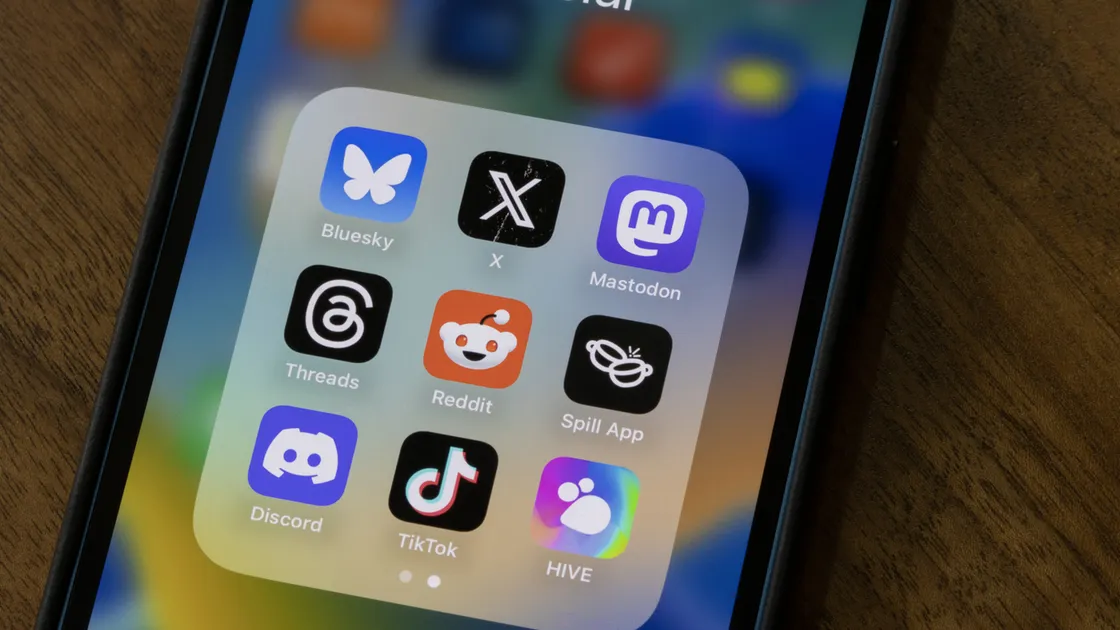SNS-Based Selling Without the Hard Sell: The Essence of Trust-Driven Social Selling in Japan

In the past, sales in Japan were dominated by cold calls and unannounced office visits. These methods were considered standard, especially in B2B contexts. However, the widespread adoption of social media has fundamentally changed this dynamic. Today, particularly among business professionals in their 20s to 40s, everything from information gathering to comparison, evaluation, and purchasing decisions can be completed within SNS platforms.
Within this evolving landscape, a new sales strategy called Social Selling has been gaining attention. Rather than relying on aggressive promotion, Social Selling focuses on building meaningful connections with followers and potential clients through social media. The approach guides them toward making a purchase through trust and engagement rather than pressure.
This shift represents a new form of sales in Japan—one based not on pushing but on attracting. It’s a style that aligns naturally with Japanese values of subtlety, empathy, and relationship-building, and it is steadily gaining traction across industries.
What Is Social Selling?
Definition and How It Differs from Traditional Sales
Social Selling is a sales approach that focuses on building human relationships and trust with prospective customers via social media, ultimately guiding them naturally toward purchasing products or services. Unlike conventional push-style sales, this method emphasizes delivering content that aligns with the audience’s needs and interests. Trust, rather than pressure, becomes the core mechanism for driving sales.
This approach is especially well-suited to the Japanese market, where there is a deep-rooted cultural aversion to overt sales tactics. In Japan, promotional messaging that feels too assertive or forced is often met with skepticism or resistance. Therefore, the process of consistent content sharing and relationship-building via social platforms becomes even more essential.
For Japanese consumers, empathy and sincerity are prerequisites for trust. As such, the “trust-building” phase in Social Selling must be more deliberate and thoughtful than in many other markets. Success depends not only on what you offer but also on how genuinely and respectfully you engage with your audience over time.
Why Is Social Selling Gaining Attention Now?
The rising use of social media and changes in consumer behavior have significantly contributed to the growing attention toward Social Selling. Especially in the post-COVID era, building relationships online has become directly linked to business success. In Japan today, consumers increasingly prioritize who they buy from rather than just what they buy or where they buy it.
Japan is home to approximately 93.8 million social media users. Platforms like Instagram, X (formerly Twitter), TikTok, and LINE are deeply embedded in daily life. Among younger generations—particularly Gen Z and Millennials—the behavior of “purchasing items seen on social media” is becoming normalized. In this landscape, social platforms are evolving into trusted spaces where individuals and businesses alike can introduce products while cultivating long-term credibility.
As a result, there is a growing demand in Japan for sales strategies that don’t feel like sales at all. Social Selling offers exactly that: a way to be naturally chosen by customers, without giving them the uncomfortable feeling of being marketed to. This aligns seamlessly with Japanese preferences for subtlety, trust, and authenticity.
Why Trust Drives Purchasing Decisions
Japanese Consumer Psychology and Cultural Context
In Japan, purchasing decisions are particularly influenced by feelings of trust and security—even more so than in many other countries. On social media, it’s not just the product that matters, but who is recommending it. Audiences pay close attention to the personality, values, and authenticity of the person behind the message. If a post—even by a popular influencer—feels overly pushy or insincere, trust can be lost in an instant.
This tendency is deeply rooted in what is often referred to as Japan’s “culture of shame,” where social harmony and the opinions of others carry significant weight. As a result, people are strongly motivated by the desire to avoid failure and to conform to group choices—thinking, for example, “If others are choosing this, it must be safe.” These emotions naturally drive consumers to rely on information and people they feel they can trust.
In the context of Social Selling, this means that accumulating trust over time is absolutely essential. Once trust is established, it often leads to longer-term relationships, repeat business, and word-of-mouth referrals. On social media, consistency in messaging and sincere interactions become especially important benchmarks in the eyes of Japanese users. These elements are the keys to winning their support—and ultimately, their business.
Relationship Marketing and the Accumulation of Trust
At its core, Social Selling is not about “selling” but about “building relationships.” This principle aligns especially well with Japanese business culture, where deals often cannot proceed without a foundation of trust. In such an environment, the philosophy of relationship marketing proves exceptionally effective.
By consistently sharing your thoughts, beliefs, and professional activities through regular social media posts, you present yourself as someone reliable and committed. This helps followers perceive you as someone who is actively engaged and driven by purpose. As a result, you begin to build what we might call a “trust bank”—a reservoir of credibility that can support future product or service recommendations. When the time comes, people are far more likely to think, “If this person says it’s good, I believe them.”
Equally important are the interactions that take place as relationships develop: replying thoughtfully to comments, offering advice through direct messages, or participating in offline events and community activities. These actions move people emotionally. Japanese users are particularly attuned to such care and sincerity, which often become the very triggers that inspire them to make a purchase.
In short, relationship marketing is highly compatible with Japanese cultural values. It plays a crucial role in accumulating trust and is an essential element in any successful Social Selling strategy in Japan.
Awareness — Becoming Known in the Social Space
The first step in Social Selling is awareness—ensuring that potential customers become aware of your presence. In Japan, there is a particularly strong tendency not to purchase from people they don’t recognize or trust. Therefore, the initial challenge is to consistently appear in your target audience’s field of vision through your content and activity on social platforms.
To enhance visibility, regular feed posts and Stories on Instagram, informative updates on X (formerly Twitter), and short, engaging videos on TikTok are highly effective tools. Japanese users are especially responsive to social proof—if someone they trust likes, shares, or recommends a post, it significantly increases the likelihood that others will notice and accept that message. This cultural trait makes community engagement and follower interaction powerful engines of awareness.
Additionally, your profile presentation is critically important in Japan. Upon first encounter, users often evaluate: “Who is this person?” and “Do they seem trustworthy?” Based on these impressions, they decide whether to follow you or move on. Therefore, maintaining a consistent visual identity and clearly communicating your field of expertise and values are vital in increasing both the reach and the quality of your awareness. This strong first impression lays the groundwork for deeper stages of relationship building.
Empathy — Shared Values as the Gateway to Trust
Once awareness is established, the next crucial stage in Social Selling is cultivating empathy. For Japanese social media users, trust does not stem solely from surface-level information. Instead, it is built through resonance with the emotions, values, and daily experiences shared by the person behind the account. In this context, your ability to show your real self through regular posts, Stories, and even live broadcasts plays a key role.
What’s particularly effective is sharing your own challenges, struggles, and personal stories. When followers recognize, “This person has gone through something similar to me,” it immediately shortens the emotional distance. Such moments of relatability create a strong sense of connection. However, to earn genuine empathy, your content must be expressed in a tone that is gentle, non-forceful, and mindful of the audience’s emotional landscape.
In Japan, where the culture of “reading the air” (空気を読む) is deeply ingrained, communication is expected to be subtle and emotionally intelligent. Rather than pushing a personal agenda, crafting messages that invite empathy is a more effective approach to earning trust. Once this emotional bond is formed, it can evolve into a powerful sentiment: “If I ever buy, I want to buy from this person.” In this way, empathy becomes the first step toward true emotional alignment—one of the most potent drivers of Social Selling in Japan.
Trust — Consistency and Dialogue as the Keys to Deeper Relationships
After establishing empathy, the next and most critical phase in Social Selling is building trust. In Japanese culture, trust is a delicate but powerful element: once earned, it can create long-term loyalty, but once lost, it is extremely difficult to recover. This makes the trust-building phase particularly important in the Japanese social landscape, where users pay close attention to consistency, sincerity, and responsiveness.
Trust is not built overnight. It grows through small but meaningful actions—such as replying thoughtfully to comments, responding to direct messages with genuine care, and maintaining a steady rhythm of authentic posts. These acts accumulate over time, shaping the perception that “this person is reliable.” Japanese audiences are especially sensitive to inconsistencies, so ensuring your current stance aligns with your past content is essential. Holding true to your core values and maintaining a coherent tone across all posts helps strengthen this trust.
Additionally, dialogue plays a central role in this stage. Trust doesn’t flourish in one-way communication. Instead, two-way interactions—be it Q&As in Stories, comment discussions, or collaborative content with your followers—reinforce the emotional bond. In Japan, where harmony and sincerity are deeply valued, this type of respectful, ongoing interaction is seen as a hallmark of someone trustworthy.
Handled with care, this phase naturally paves the way to the final stage: purchase. Not because the seller pushed hard, but because the buyer wants to support someone they trust. That is the essence of Social Selling in the Japanese context.
Purchase — Converting Trust into Action
The final stage of Social Selling is the purchase—when followers transition from passive observers to paying customers. In the Japanese market, this step is only taken when emotional resonance and accumulated trust have reached a point where the buyer feels confident and secure. Rather than rushing the conversion with aggressive promotion, it is far more effective to create an environment where the buyer feels safe and supported.
Japanese consumers are generally cautious and tend to make decisions based on thorough information gathering. Instead of immediately purchasing from a social media post, many will search on Google, check reviews on e-commerce sites, or look for social proof through other users’ experiences. To support this behavior, it is helpful to include third-party perspectives in your posts—such as sharing how others have used your product or service—or to detail your own usage stories in a sincere, informative way.
Another key element in this phase is the post-purchase follow-up. In Japan, thoughtful gestures such as sharing a customer’s post or sending a message of appreciation are deeply valued and help reinforce trust. These interactions not only foster loyalty but also encourage repeat purchases and word-of-mouth referrals.
In essence, the goal of Social Selling in Japan is not just to “make a sale.” It is to nurture long-term connections built on trust. The purchase becomes a milestone—not the end—but part of an ongoing relationship that benefits both seller and buyer over time.
Platform-Specific Strategies for Social Selling
Instagram — Capturing Hearts Through Aesthetic and Empathy
Instagram holds a particularly strong presence among Japanese users, especially women in their 20s to 40s. With its highly visual nature, this platform is ideal for expressing not just products or services but an entire aesthetic world. This quality aligns closely with the Japanese preference for ambience and emotional resonance, making Instagram one of the most effective platforms for Social Selling in Japan.
By curating a cohesive feed, sharing snippets of daily life through Stories, or offering behind-the-scenes glimpses, sellers can create a lifestyle that followers aspire to. Japanese users are highly responsive to who is using a product and how they are using it—rather than simply focusing on product features. Thus, showcasing real usage scenarios through Stories or Reels helps bridge the gap between passive interest and active purchase.
Trust-building also plays a central role. A carefully crafted profile, complete with a clear bio, professional highlights, and consistent imagery, strengthens perceived credibility. Showing your real name, face, or past client achievements provides the social proof many Japanese users seek before making purchasing decisions.
In Japan’s Social Selling landscape, Instagram is more than a sales channel—it’s a stage where you build empathy, express identity, and earn trust. The brands and individuals who understand how to attract rather than sell through visual storytelling are the ones who gain loyal, emotionally connected followers.
X (formerly Twitter): Blending Daily Life with Expertise
X, formerly known as Twitter, remains a popular platform in Japan, particularly among business professionals in their 30s to 50s and those with a high sensitivity to information. Its strength lies in real-time communication and rapid content sharing. On this platform, combining everyday thoughts with professional insights is key to building trust.
Japanese users tend to prefer content that is neither too stiff nor overly casual. Posts that demonstrate consistency in values and invite support—“This person’s ideas make sense” or “I want to support this person”—tend to gain traction. Interaction through replies and quote reposts plays a direct role in nurturing mutual trust.
For instance, providing thoughtful answers to questions or offering empathetic comments to user concerns can serve as a non-salesy approach that makes followers think, “I want to learn from this person” or “I’d like to talk to them.” On X, Social Selling in Japan is not about pushing sales, but about cultivating conversations. These consistent interactions gradually lead to purchasing behavior in a natural, trust-based manner.
LinkedIn: Becoming the “Trust-Based Business Card” in Japan
LinkedIn is gaining traction in Japan, especially among professionals in IT, consulting, freelance, and executive roles. Known globally for building credibility and showcasing expertise in B2B settings, LinkedIn is increasingly being used in Japan as a tool to find business partners and build trust-based relationships.
Although its user base is still smaller compared to platforms like Facebook or Instagram, LinkedIn resonates well with Japanese professionals who prioritize business credibility. The platform’s detailed profile section allows users to present their experience, skills, and achievements—often more effectively than a traditional business card.
In Japanese business culture, recommendations and introductions play a crucial role in establishing trust. Therefore, LinkedIn’s features—such as endorsements, mutual connections, and shared networks—are powerful assets for Social Selling. Regularly sharing professional insights, case studies, or client success stories helps attract inbound interest without the need for overt sales tactics.
Given Japan’s strong preference for buying from trusted individuals and choosing partners based on personal credibility, LinkedIn is becoming a vital platform for Social Selling in the Japanese market. It serves as a reliable foundation for trust-building, making it increasingly indispensable for those who aim to sell through connection rather than persuasion.
YouTube: Visual Proof That Reinforces Japanese Buying Decisions
YouTube is widely used across all age groups in Japan and plays a significant role as a “research tool” before making purchases. Many Japanese users watch product reviews, tutorials, and personal experiences on the platform to gather information before deciding to buy. Through visual and auditory content, YouTube enables creators to build trust more effectively than text-based posts alone.
Japanese consumers tend to be risk-averse and place high value on trust and reassurance. With a strong desire to “avoid making a bad purchase,” they often seek visual “evidence” in videos before buying. For this reason, posting videos that demonstrate product usage, explain case studies, or share user experiences can greatly support Social Selling efforts in Japan.
In addition, engaging with viewers through comment replies and consistent interaction helps foster deeper trust. Elements like facial expressions, tone of voice, and manner of speaking—non-verbal cues often overlooked in other formats—play an important role in how authenticity and sincerity are perceived by Japanese audiences.
Because YouTube enables both information delivery and trust building at once, it is a highly effective platform in Japan for removing purchase-related anxieties. As part of a Social Selling strategy, YouTube excels at providing the “reassurance content” that Japanese buyers seek before making a decision.
Practical Techniques for Social Selling on SNS
Subtle Selling Through Instagram Stories
In Japan, overt sales tactics on social media often backfire, as trust is more likely to be built through subtle, natural communication. Instagram’s Stories feature is particularly effective for this approach, as it allows sellers to blend promotional content seamlessly into daily life updates—a perfect fit for Social Selling.
The key is to “hint” at the appeal of your product or service through seemingly casual posts, such as “today’s workspace,” “a lighthearted customer comment,” or “an item I’ve been using a lot lately.” This method avoids direct advertising and resonates with Japanese audiences who appreciate modesty and sincerity in communication.
Using features like polls and question stickers can also foster natural interaction with followers. A simple question like “Which one do you prefer?” can spark conversations and gradually strengthen the relationship between creator and audience.
Because Japanese consumers generally dislike pushy messaging, Stories offer an ideal space to “convey without selling.” The temporary nature of Stories (disappearing after 24 hours) can be leveraged to create a sense of intimacy and exclusivity—“just a quick share” or “a little behind-the-scenes moment.” These nuances help build emotional closeness and can ultimately lead to purchase decisions like, “I’ll buy it because this person recommended it.”
Building Trust Through Comments and Direct Messages
How Thoughtful Responses Foster Relationships in Social Selling
In Social Selling, trust is often built not just through the content you post, but through how you respond to others. In Japan especially, the way you interact with followers—such as replying to comments or responding to direct messages—is seen as a reflection of your sincerity. This often leads to increased purchase intent or word-of-mouth referrals.
When replying to comments, it’s best to go beyond a simple “thank you.” Instead, reference what the commenter said or show specific appreciation. For example, saying, “I’m so happy to hear you use the same item, 〇〇-san!” makes your response more personal and deepens the emotional connection.
Direct Messages (DMs) are also a powerful trust-building tool in Japan. However, it’s important to keep the tone conversational, not sales-driven. Simple messages like “Thanks for your question!” or “I really appreciate you checking out my recent post” help establish a natural and authentic relationship. As this trust accumulates, it gradually nurtures a desire to buy from you.
Response speed is another key factor. In Japanese culture, a quick reply is often associated with reliability, so aiming to respond within 24 hours is ideal. What matters most is a sincere and down-to-earth tone—this is the heart of effective Social Selling for Japanese audiences.
Designing Subtle Sales Posts: The Art of “Soft Selling” on Japanese Social Media
How to Blend Product Promotion with Personal Expression
“Soft selling” in the Japanese market—referred to here as nijimase eigyō(にじませ営業)—is a technique where products or services are introduced subtly through daily life and personal storytelling, rather than through direct advertising. In Japan, where overt promotion often feels intrusive, subtlety and emotional alignment are more likely to earn trust. People prefer to buy from those they emotionally relate to rather than from obvious sellers.
To create this type of content, post about your daily work or lifestyle and gently incorporate the product or service. For example, share a moment from your workday that includes how the product fits into your routine, or highlight a kind comment from a satisfied customer. Striking a balance between self-expression and business intent is essential.
It’s also helpful to include “results-based” or “personal insight” posts once or twice a week. These posts don’t push the sale but allow followers to recognize the value of what you offer through your lived experience.
When writing captions, avoid sounding like you’re selling something. Instead, present the product as a natural part of your lifestyle—something you genuinely use and enjoy. Japanese social media users are more likely to be influenced by people they like than by traditional salespeople. The key lies in sharing authentic values and sincerity, which inspire trust and drive purchasing decisions.
By mastering this soft-selling approach, you can honor the Japanese preference for feeling in control of their choices, while still creating effective sales opportunities in a natural and culturally resonant way.
Common Mistakes and How to Avoid Them
When practicing Social Selling, many people tend to fall into common traps such as “overselling,” “introducing products before building trust,” and “getting discouraged by a lack of responses and giving up.” These issues often arise from using social media in the same way as traditional advertising methods.
First, regarding “overselling,” it’s worth noting that in Japan, persistent or self-centered messaging tends to be disliked. Instead of overt appeals like “Please buy this!” or “Only a few left!”, Japanese users are more likely to resonate with background stories such as “This product was made with these thoughts in mind,” or “Here’s an experience that inspired it.”
Next, when promoting products before building a relationship of trust, people often get the impression that “this person just wants to sell something,” which increases the risk of losing followers. Japanese SNS users tend to feel “trust” through someone’s personality and everyday posts. Therefore, the priority should be to let others get to know you—through your profile, regular posts, and stories—before promoting anything.
Additionally, some people stop posting because of a lack of reactions, which is extremely unfortunate. In Japan, there are many “silent followers” who view content without interacting. These followers often carefully observe posts over time and may suddenly make a purchase one day without any prior visible engagement.
To avoid these types of mistakes, it’s important to build trust at your own pace while centering your communication on empathy. Don’t rush—continue sincerely and consistently. That’s the key to success in Social Selling within the Japanese market.
Conclusion: From “Selling Yourself” to “Building Trust” – The Future of Sales
In the age of social media, sales are no longer about “pushing products” but about “building trust.” Especially in the Japanese market, empathy, sincerity, and natural, unforced communication often trigger purchasing behavior. Social Selling is an approach that perfectly matches this cultural expectation.
Rather than treating followers as “potential customers,” it’s about forming genuine relationships with them as individuals. Each post, story, and comment reply serves as a deposit into a “trust bank,” eventually leading followers to think, “I want to buy from this person.”
Social Selling is not about aggressive sales—it’s about delivering trust through communication. By consistently sharing content that aligns with Japanese cultural values and consumer psychology, businesses can establish a new sales style that leads to revenue without resorting to hard selling.






